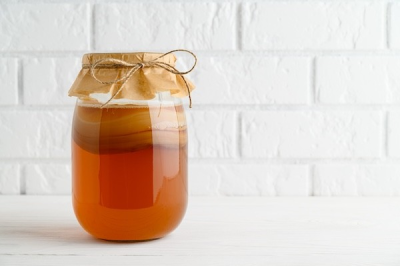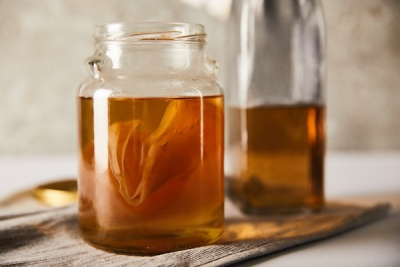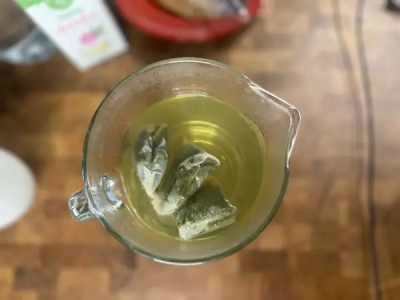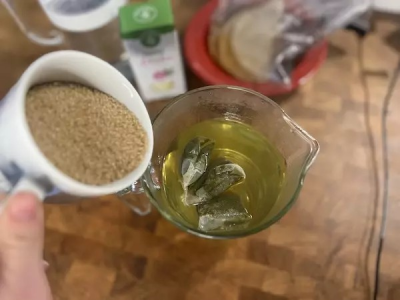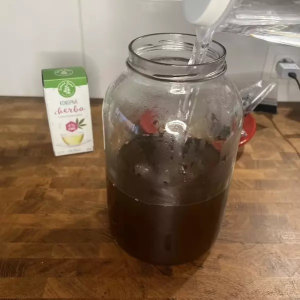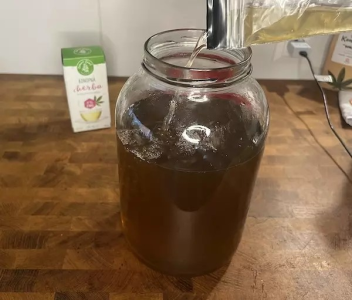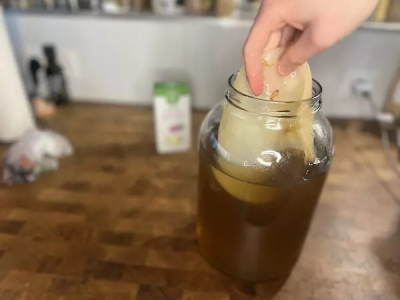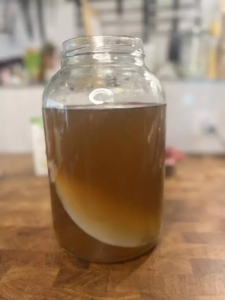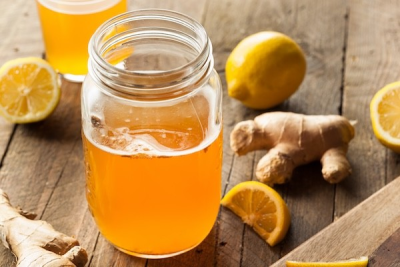How to make homemade hemp kombucha?
Author: Lucie Garabasova
The history of kombucha dates back to ancient China. Over time, kombucha has evolved from an unknown drink into an iconic symbol of a healthy lifestyle. This fizzy, fermented delicacy, blending ancient tradition with modern taste trends, has become a symbol of a progressive approach to caring for both body and soul. Today, we’ll share with you how to make this drink at home.
In a world where the balance between physical and mental health is more sought after than ever, kombucha offers not only refreshing flavors but also a wealth of probiotics that support digestive health and strengthen immunity. However, kombucha is much more than just a drink – it’s a means to explore creativity, community, and sustainability.
Let's take a look at the effects of hemp kombucha and how you can easily make it at home!
What is kombucha?
Kombucha is a fermented drink made from sugar, tea, and a symbiotic culture of bacteria and yeast known as SCOBY (Symbiotic Culture Of Bacteria and Yeast). The process of making kombucha involves fermenting tea with this culture, resulting in the production of acids and other compounds.
During fermentation, various biochemical processes occur, changing the flavor and composition of the drink. Kombucha is known for its distinctively refreshing taste and light tanginess. It’s typically mildly acidic with a delicate aroma that can be influenced by the type of tea used and the length of fermentation.
Kombucha is considered a functional beverage, meaning it’s associated with various health benefits. It contains probiotics, antioxidants, and other compounds that can promote digestive health, strengthen the immune system, and provide other beneficial effects.
This beverage has its roots in Asia, specifically China and Japan, but it has gradually spread worldwide as a popular alternative to soda and other sugary drinks. Kombucha is often sold commercially in bottles but can also be made at home using simple ingredients and fermentation processes.
What are the effects of hemp kombucha?
- Probiotics: Kombucha contains live cultures of bacteria and yeast that may help support the health of gut microbiota.
- Antioxidants: Kombucha contains antioxidants, such as polyphenols, which can protect cells from damage caused by free radicals. Antioxidants are linked to reducing inflammation and protecting against various diseases.
- Detoxification: Some believe kombucha can help detoxify the body. The fermentation process may aid in removing toxins and residues from the digestive system.
- Immune system support: With its probiotic and antioxidant content, kombucha can strengthen the immune system and help the body fight infections and illnesses.
- Energy and vitality: Some people report that consuming kombucha helps boost energy and vitality. This may be due to the combination of vitamins, minerals, and probiotics in the drink.
- Stress and anxiety relief: If you make kombucha with hemp tea, you can enjoy the benefits of hemp tea, including stress and anxiety relief.
Recipe for homemade hemp kombucha
Ingredients:
- 1 cup of sugar
- 10-12 bags of hemp tea (alternatively, you can use 5 teaspoons of loose, unflavored hemp tea)
- 1 SCOBY (kombucha mother)
- About 300 ml of kombucha from a previous batch
- 3-4 liters of water (filtered is ideal)
- A glass jar for fermentation (we use a 3-liter jar)
- A piece of cloth, cheesecloth – we use a fabric handkerchief
Process of making hemp kombucha:
- Brew the tea by pouring hot water over it and let it steep for 20 minutes in a clean container (we recommend using a different container than the one where your kombucha will later ferment).
- Thoroughly stir in the sugar until it is completely dissolved.
- Wait until the tea cools to room temperature, then top it up with water and pour it into the jar you've prepared for fermentation.
- Then pour the liquid from the previous batch (from the previous batch of kombucha, or the starter liquid that comes with store-bought kombucha) into the jar.
- Now place the SCOBY on the surface of the liquid. Don’t worry if it floats on the surface or sinks to the bottom – both are perfectly fine.
- Place a cloth napkin over the top of the jar and secure it with a rubber band. This will keep dust out while still allowing the kombucha to breathe.
-
Let it ferment for about 7 to 10 days. Taste it periodically, and when it reaches your desired flavor, you can strain the kombucha. Don’t let it ferment for more than 14 days, as it will turn into vinegar.
Once the kombucha is ready, remove the SCOBYs and rinse them to preserve for future use. Set aside some of the prepared kombucha and store it in the fridge for your next batch.
Secondary fermentation of kombucha
Try out new kombucha flavors!
All you’ll need in addition are bottles with swing-top closures (like the ones used by Bernard Brewery; just wash them out and fill them with boiling water, or you can buy them in kitchenware stores or online). PET bottles can also be used, but they may not be the best choice for long-term fermentation.
For flavoring your kombucha, use whatever you like! Fruit juice, blueberries, strawberries, fresh or dried herbs (such as lemon balm), ginger, lemon, and more.
Add flavorings up to a maximum of 5% of the total volume.
Adjust the kombucha based on its acidity—use 1-2 teaspoons of sugar for 0.5 liters. Then add your favorite fruit or herbs, shake it up, and let it ferment for another 2-3 days. We recommend opening the bottle twice a day for a short time to let in some air.
How about CBD kombucha?
If you want to make a delicious, healthy drink infused with therapeutic CBD, which can be a great boost for your immune system, here's how: instead of using regular hemp tea with low or medium CBD content, use a high-CBD tea and add a little oil or butter to the hot tea. Cannabinoids dissolve in fats or alcohol, so by doing this, CBD will infuse into your brew, making the resulting kombucha enriched with its benefits.

